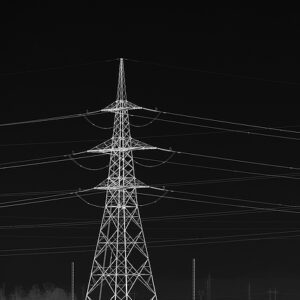A new study warns that the Biden administration-backed push to electrify America’s economy is on a collision course with its policy of retiring “base load” power plants as part of its green agenda.
As a result, the study conducted by Quanta Technology finds that for America’s largest electric grid operator, “Maintaining adequate [electric] resources will be a challenge for the PJM system in the future when the grid is likely to be operating under abnormal conditions (e.g., extreme weather events).”
The study, which examined a number of scenarios expected over the next several years found “the transmission security analysis shows equipment overloads that trigger as much as 6,826 megawatts (MW) of load shedding during average winter peak demand under a high retirement scenario.”
Additionally, the study’s “ resource adequacy analysis shows a potential system loss of load of as much as 13,900 megawatts (MW) during extreme winter peak demand.” Every megawatt is between 1,000 and 1,500 homes without power. That translates to upwards of 14 million customers
The Quanta Technology study, prepared for the industry group America’s Power, reviewed the 13 states and the District of Columbia across the Mid-Atlantic and Midwest regions served by the PJM Interconnection transmission organization. PJM manages the high-voltage grid that brings electricity to more than 65 million people.
It found that, while PJM’s system is currently stable, by 2028 the increased demand and lack of new generation will put the grid under extreme strain. At least 30 electrical facilities could overload during the summer months due to energy demands from massive, new data centers coming online in the region. The outlook is every more ominous in the winter when at least 52 power facilities could overload due to demand on the PJM grid.
“The current pace of entry of new generation is insufficient to keep up with expected retirements and increasing load growth, and could threaten system reliability toward the end of this decade,” PJM spokesperson Jeffrey Shields told InsideSources. “PJM is working with stakeholders across industry and government not only to address challenges hindering the construction of new generation.
“It is critical that replacement generation is actually built and operational before existing generators are forced to retire because of policy,” Shields added.
The debate isn’t over the ability of wind and solar to produce electricity, but rather the reliability of these new sources — particularly during periods of extreme weather. Providers like PJM rely on “base load” power plants such as coal, nuclear or hydroelectric that provide a constant supply of electricity, providing a “base” for the grid that can be supplemented by other sources.
“Both wind and solar, they just don’t give you a lot of energy,” Trisha Curtis, chief executive of the consultant group PetroNerds told InsideSources regarding the new report. “They require either a massive base load — you have to have a backup power for when the wind isn’t blowing and the sun isn’t shining either with coal or with natural gas.”
Coal and natural gas are key components of the current base load supply, but they are out of favor with the Biden administration. Setting aside the politics, says Mark Olson with the North American Electric Reliability Corporation (NERC), there could be major problems if coal and natural gas plants shut down at the pace the Biden administration has suggested.
“There is a substantial amount of fossil-fired generators that have announced plans to retire within the 10-year period but have yet to formally enter PJM’s planning process for retirement,” Olson said. “These additional retirements… could result in capacity shortfalls. Further, the change in types of resources to a more variable and weather dependent resource mix could expose the PJM area to risk of insufficient energy and greater natural gas fuel vulnerability in extreme weather conditions.”
America’s Power President and CEO Michelle Bloodworth says America’s political and business sectors need to embrace the realities of the grid, particularly as they push more consumption of electricity.
“Fossil fuels – the sources that are being forced to retire prematurely – provided more than 80 percent of the additional electricity that was needed in the hardest hit regions of the country when [a winter storm in January] peaked,” she said. “By comparison, wind and solar power was able to increase its output by only ten percent.”
The danger from loss of base load power isn’t theoretical. Filmmaker Robert Bryce, who created the docuseries “Juice: Power, Politics & The Grid,” after the near collapse of the Texas grid in the winter of 2021. His home in Austin lost power for 48 hours, a shocking development in an energy-rich state, inspiring him to “alert people and policymakers about the dangers facing our electric grid.”
“The incentives are to build more weather-dependent generation,” Bryce told InsideSources. “That’s unfortunately what we’re gonna see built. Is there a recognition that we have a problem? Yes. Is enough being done about it? No.”
Bryce isn’t the only person pessimistic about the reliability of the electric grid in the near future. As the Quanta Technology report states, “policymakers and the electric industry must carefully consider if and when existing generation resources can be retired without negatively impacting resource adequacy and secure transmission operations.” And the report urges the electric industry to achieve “a better understanding of how extreme weather events and climate change affect power system needs.”
The good news, says Curtis, is that unlike some European nations also struggling with grid reliability, America’s problem isn’t supply. It’s just politics.
“We have enough energy. We need to be able to unleash it.”


